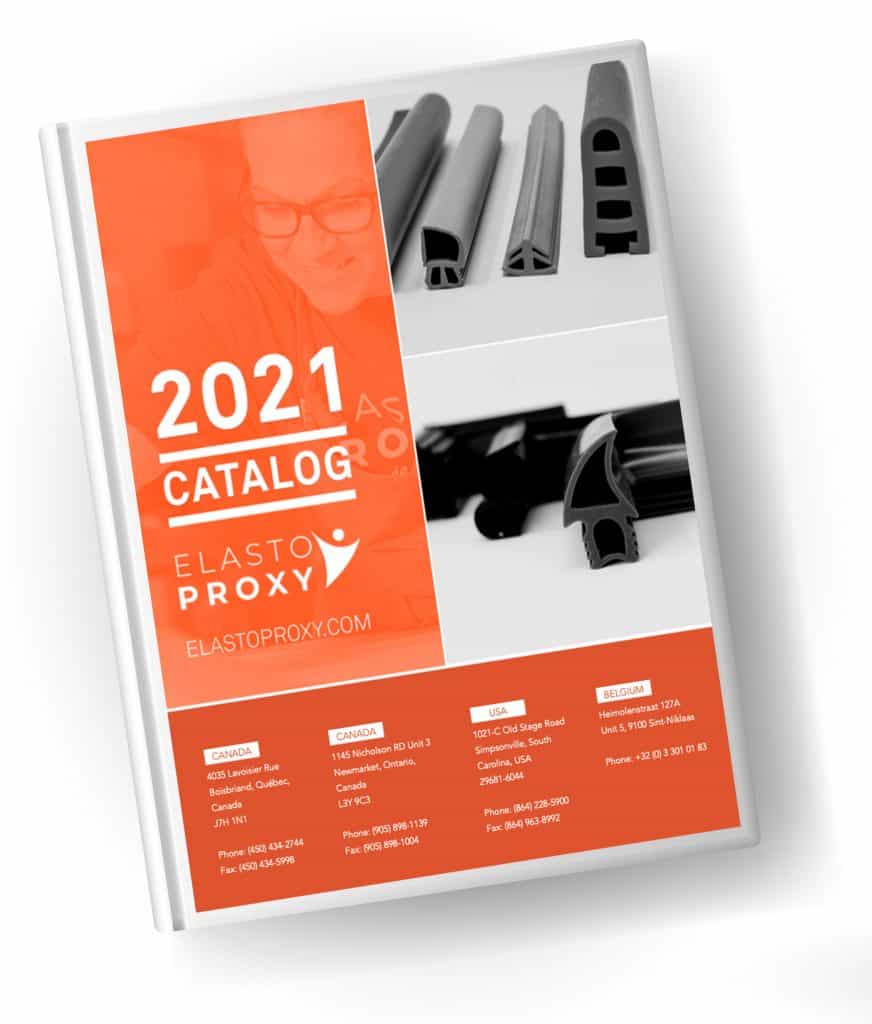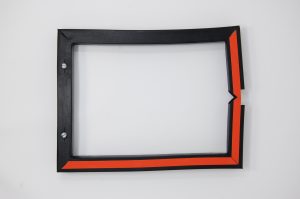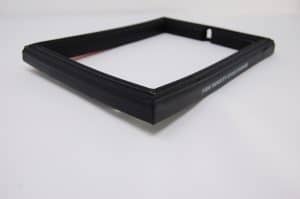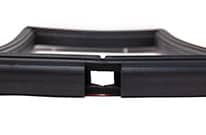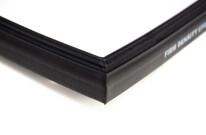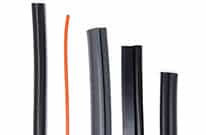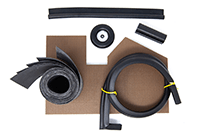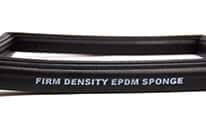ASTM D2000 is an industry specification that provides buyers, suppliers, and fabricators with a standard way to describe the rubber that’s used in seals, gaskets, and insulation. Published by ASTM International and designed for automotive applications, this classification system is also used by many other industries because it’s clear, concise, and descriptive.
As you’ll learn in this article, ASTM D2000 is essential because it provides a “common language” for explaining what you need. That’s important because it’s not enough to ask a rubber fabricator for “black rubber” or even a certain material or durometer. With ASTM D2000, you can describe or call out rubber materials based on physical properties in a standardized way.
ASTM D2000 is an industry specification that provides buyers, suppliers, and fabricators with a standard way to describe the rubber that’s used in seals, gaskets, and insulation. Published by ASTM International and designed for automotive applications, this classification system is also used by many other industries because it’s clear, concise, and descriptive.
As you’ll learn in this article, ASTM D2000 is essential because it provides a “common language” for explaining what you need. That’s important because it’s not enough to ask a rubber fabricator for “black rubber” or even a certain material or durometer. With ASTM D2000, you can describe or call out rubber materials based on physical properties in a standardized way.
How to Read ASTM D2000 Specifications
ASTM D 2000 uses letters and numbers to describe (call out) the properties of vulcanized rubber. Type and Class are the most important callouts to consider. In the language of rubber, think of Types and Classes as nouns and verbs – the building blocks of sentences. There are also other callouts that, like adjectives and adverbs, help with descriptions.
Here’s a complete “sentence” in ASTM D2000. We’ll use it as an example throughout.
ASTM D 2000-3 M2BG714B14EA14EF11EF31 EO14 EO34 F17
The language of rubber might seem complicated, but let’s crack the code one step at a time by examining its eight components:
- Standards
- Year Last Revised
- Units of Measure
- Grade
- Type
- Class
- Durometer Hardness and Tensile Strength
- Suffixes
The following sections explain.
1. Standards
The first few letters and numbers (ASTM D 2000) simply indicate the standard.
ASTM D 2000-3 M2BG714B14EA14EF11EF31 EO14 EO34 F17
2. Year Last Revised
The -3 after the 2000 indicates the year (2003) in which the standard was last revised.
ASTM D 2000-3 M2BG714B14EA14EF11EF31 EO14 EO34 F17
3. Units of Measure
The M after the -3 indicates that all units of measure are metric. If the M is missing, then imperial units are used.
ASTM D 2000-3 M2BG714B14EA14EF11EF31 EO14 EO34 F17
4. Grade
Grade indicates the tests to which the rubber was subjected.
- 1 is for rubber that meets the most basic requirements.
- 2 through 8 indicate higher levels of testing.
In our example, the grade of the rubber is 2.
ASTM D 2000-3 M2BG714B14EA14EF11EF31 EO14 EO34 F17
5. Type
Type is a lettered callout that describes a rubber’s temperature resistance. In our example, the Type is B.
ASTM D 2000-3 M2BG714B14EA14EF11EF31 EO14 EO34 F17
With types, the material must meet the following requirements after 70 hours of heat aging at a specified temperature.
- Change in tensile strength: ±30%
- Change in hardness: -50% max.
- Change in hardness ±15 points
So, what are the specified temperatures behind Types? The table below explains this.
Table 1 – Types
Type | Test Temp (°C) |
A | 70 |
B | 100 |
C | 125 |
D | 150 |
E | 175 |
F | 200 |
G | 225 |
H | 250 |
J | 275 |
K | 300 |
6. Class
Class describes a rubber’s resistance to swelling in oil after 70 hours at the temperatures listed in Table 1, but only up to 150°C. That’s the maximum temperature stability of the test oil (IRM No. 903) used in ASTM D 2000.
In the language of rubber, Class is so important that it’s like a verb. By putting a noun (type) and verb (class) together, we form a basic sentence in ASTM D 2000. As with most English sentences, the verb (G) follows the noun (B).
In our example, the Class is G.
ASTM D 2000-3 M2BG714B14EA14EF11EF31 EO14 EO34 F17
As the table below shows, ASTM D 2000 assigns a lettered class to each maximum allowable volume swell by percentage (%).
Table 2 – Classes
Type | Max. Swell (%) |
A | No requirement |
B | 140 |
C | 120 |
D | 100 |
E | 80 |
F | 60 |
G | 40 |
H | 30 |
J | 20 |
K | 10 |
7. Durometer, Hardness, and Tensile Strength
ASTM D 2000 defines durometer, hardness, and tensile strength with a three-digit number. In our example, it’s 714.
ASTM D 2000-3 M2BG714B14EA14EF11EF31 EO14 EO34 F17
Within the 714, the 7 denotes a material with a durometer hardness of 70 ± 5 A and the 14 indicates that the tensile strength must be at least 14 MPa, or 2032 psi.
8. Suffixes
As we’ve learned, the language of rubber contains the equivalent of nouns, verbs, adjectives, adverbs, and other parts of speech. There are suffixes, too – literally. These combinations of letters and numbers can be quite long, depending on your requirements. As you can see, our example is half suffix.
ASTM D 2000-3 M2BG714B14EA14EF11EF31 EO14 EO34 F17
Table 3 – Suffix Letters
Suffix | Required Test |
A | Heat Resistance |
B | Compression Set |
C | Ozone or Weather Resistance |
D | Compression-Deflection Resistance |
EA | Water Resistance |
EF | Fuel Resistance |
EO | Oil and Lubricant Resistance |
F | Low Temperature Resistance |
G | Tear Resistance |
H | Flex Resistance |
J | Abrasion Resistance |
K | Adhesion |
M | Flammability Resistance |
N | Impact Resistance |
P | Staining Resistance |
R | Resilience |
Z | Other (User-Defined) |
Language can be colorful, of course, and the language of rubber is no exception. Remember, however, to always assume that the color of rubber is black except for FC, FE, FK, and GE.
If you need a different color rubber material, then consider that a color change may also change the material’s physical properties. When in doubt, check with your supplier
Table 4 – Suffix Numbers
In addition to letters, suffixes contain numbers.
- The first number specifies the duration of the test and the test method.
- The second number indicates the testing temperature.
Understanding all of the suffix numbers in ASTM D 2000 is a tall order and means purchasing the specification. If you do buy the entire standard from ASTM International, then refer to Tables 4 and 5 for details. Remember, too, that there are restrictions on how much of ASTM D 2000 you can share.
Get Answers About ASTM D2000
Elasto Proxy hopes you’ve enjoyed this lesson in the language of rubber and now understand how to read ASTM D 2000 specifications. We can also explain how to learn about other ASTM standards for rubber gaskets. If you have questions, need clarifications, or would like to discuss your application, please contact Elasto Proxy.
Download the Elasto Proxy catalogue. It is FREE!
Discover more about Elasto Proxy’s rubber sealing and insulation products.
